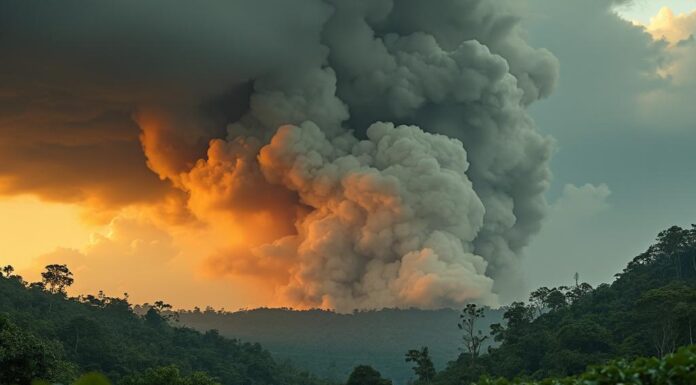In an era increasingly defined by climate change, corporate carbon offsets—specifically those tied to forest preservation—are undergoing rigorous examination. Originally hailed as a revolutionary approach to mitigate environmental degradation, these well-intended mechanisms are now scrutinized for their efficacy and ethical implications. This journalistic exploration delves into the intricate world of corporate carbon offsets, examining their role as potential tools for greenwashing and their impact on global deforestation trends.
Unveiling the Illusion: Corporate Carbon Offsets in Numbers
Key figures reveal a concerning narrative around carbon credits. In 2024, although about 255 million carbon credits were issued with 162 million retired, most stemming from renewable energy and REDD+ projects, studies suggest that deforestation continues unabated even in areas protected by such credits. For instance, despite restoration efforts underpinned by carbon credit projects, Brazil’s Cerrado still displays significant loss of native vegetation—a harsh reminder of the ongoing battle against environmental degradation.
Voices of Dissent and Critical Perspectives
Recent investigations and expert analyses offer a sobering view on the effectiveness of carbon offsets. Reports suggest that big oil companies use offsets more as a marketing strategy rather than a genuine effort towards sustainable practices. Moreover, entities like Minerva in the Brazilian Cerrado capitalize on carbon markets without effective checks on deforestation activities.
Critiques from Yale researchers and reports from Corporate Accountability have pointed out systemic flaws in forest carbon credit protocols that not only lead to over-crediting but also misrepresent actual carbon sequestration levels. This scenario highlights the need for more stringent oversight and transparency in how these credits are managed and reported.
Technological Innovations: A Beacon of Hope?
Advancements in remote-sensing satellite technology provide a glimmer of hope for better monitoring and verification processes. By exposing discrepancies between declared and actual forest coverage, this technology could play a pivotal role in ensuring that offset claims are grounded in reality. Furthermore, emerging discussions around integrating blockchain and AI for improved transparency signal a move towards more reliable and traceable carbon credit systems.
Alternative Solutions and Future Pathways
As debates grow louder against the backdrop of criticism surrounding traditional offsetting methods, alternative solutions are gaining traction. Concepts such as internal carbon fees by corporations, absolute deforestation-free sourcing policies, and demand reduction strategies are being explored as more tangible approaches toward climate responsibility.
The integration of Indigenous knowledge in forest management and conservation efforts is also emerging as a critical consideration. It proposes not just an environmentally sound practice but also one that respects local communities’ rights and livelihoods.
KEY FIGURES
- In 2024, approximately 255 million carbon credits were issued and 162 million were retired, mostly from avoided deforestation projects (REDD+) and renewable energy, with fossil fuel companies dominating the voluntary carbon market (Shell being the largest user)[1].
- The Brazilian Cerrado, where Minerva’s meat supply chain operates, has lost 50% of its native vegetation, with ongoing deforestation despite carbon credit projects aimed at restoration[2].
- Forests absorb about 29% of global carbon dioxide emissions annually, highlighting their role but also the challenges in accurately crediting forest carbon offsets[5].
RECENT NEWS
- February 2025: Big oil companies are the main buyers in the voluntary carbon market, using offsets as a marketing tool while continuing high emissions, weakening Paris Agreement goals[1].
- July 2025: Investigation reveals Brazilian meat giant Minerva profits from carbon credits without halting deforestation; projects under Verra certification face transparency and rights violation issues, with evidence of ongoing forest loss despite claimed offsets[2].
- July 2025: Corporate Accountability reports that many carbon offset projects fail to deliver promised benefits, with some projects under suspension continuing to sell credits and local communities not receiving benefits[4].
- June 2025: Yale researchers highlight systemic flaws in forest carbon credit protocols that undermine the effectiveness of carbon offset markets[5].
STUDIES AND REPORTS
- INRAE et al. (2025): Scientific evaluations frequently find carbon offsets overestimate emission reductions due to unrealistic baseline scenarios; authors recommend systematic ex-post evaluations to restore credibility in offset claims[3].
- Corporate Accountability (2025): Carbon trading is fundamentally flawed and cannot be reformed; it distracts from meaningful climate action, with forest offsets unable to compensate for fossil fuel emissions and often linked to land rights conflicts and environmental harms[4].
- Yale School of the Environment (2025): Forest carbon credit protocols have deep-rooted flaws causing over-crediting and misrepresentation of actual carbon sequestration, necessitating a “roadmap” for protocol revamping to improve integrity[5].
TECHNOLOGICAL DEVELOPMENTS
- Advances in remote-sensing satellite technology now enable more precise monitoring of deforestation and forest degradation, exposing discrepancies between registry claims and real-world forest loss[2][4].
- Research teams advocate for academic, systematic ex-post impact assessments of carbon projects using robust data to better quantify actual carbon sequestration and prevent inflated claims[3].
- Emerging partnerships between tech and carbon credit firms aim to integrate blockchain and AI for transparency and traceability in carbon credit issuance and retirement, though adoption and effectiveness remain under evaluation (no direct source in current results, but this is a known trend in 2024-2025 carbon markets).
MAIN SOURCES
- https://carbonmarketwatch.org/2025/02/12/behind-the-green-curtain-big-oil-and-the-voluntary-carbon-market/ – Analysis of fossil fuel dominance in voluntary carbon markets and offset quality concerns.
- https://news.mongabay.com/2025/07/meat-giant-profits-from-carbon-market-without-halting-deforestation/ – Investigative report on carbon offsets failing to prevent deforestation in Brazil and associated rights violations.
- https://www.inrae.fr/en/news/carbon-credits-enhanced-credibility-through-better-impact-measurements – Scientific study calling for better baseline and impact measurement in carbon offset projects.
- https://reddmonitor.substack.com/p/built-to-fail-new-report-from-corporate – Critical report on systemic failures in carbon offset projects and the impossibility of reforming carbon trading.
- https://environment.yale.edu/news/article/roadmap-revamping-forest-carbon-credit-protocols – Yale-led research identifying flaws in forest carbon credit protocols and proposing solutions.
—
This synthesis shows that corporate carbon offsets—especially forest-based—often fail to deliver real-world reductions in deforestation and carbon emissions, frequently serving as a smokescreen or “greenwashing” tool for continuing emissions-intensive activities. Key issues include inflated baselines, lack of additionality, leakage, permanence risks, and socio-environmental harms such as Indigenous rights violations and biodiversity loss. New scientific approaches and technologies aim to improve accountability, but systemic reform and alternatives (like internal carbon fees, absolute deforestation-free sourcing, and demand reduction) are increasingly advocated by experts.
carbonmarketwatch.org – Behind the green curtain: big oil and the voluntary carbon …
news.mongabay.com – Meat giant profits from carbon market without halting …
inrae.fr – Carbon credits: enhanced credibility through better impact …
reddmonitor.substack.com – Built to fail. New report from Corporate Accountability reveals …
environment.yale.edu – A Roadmap for Revamping Forest Carbon Credit Protocols
theguardian.com – Source
caryinstitute.org – Source
science.org – Source
cnr.ncsu.edu – Source
carboncredits.com – Source
features.propublica.org – Source
blogs.lse.ac.uk – Source
sciencedirect.com – Source
nature.com – Source
forbes.com – Source
insideclimatenews.org – Source
phys.org – Source
sciencedirect.com – Source
project-syndicate.org – Source
x.com – Source
x.com – Source
x.com – Source
x.com – Source
x.com – Source
x.com – Source



